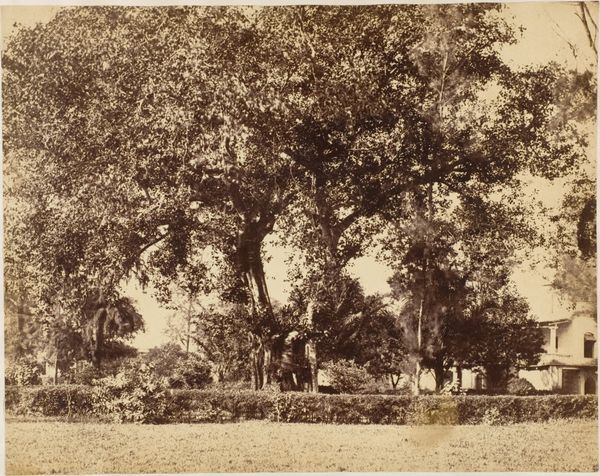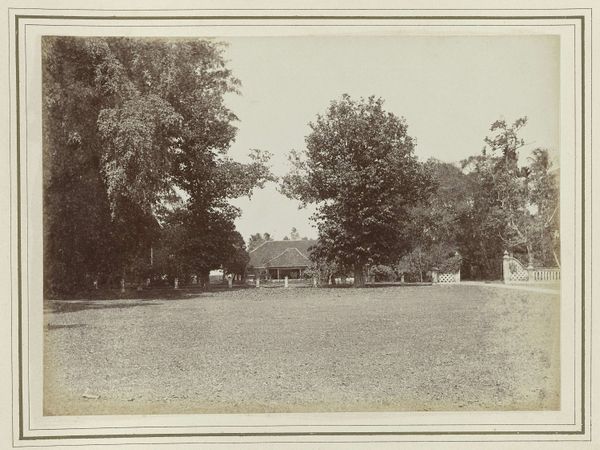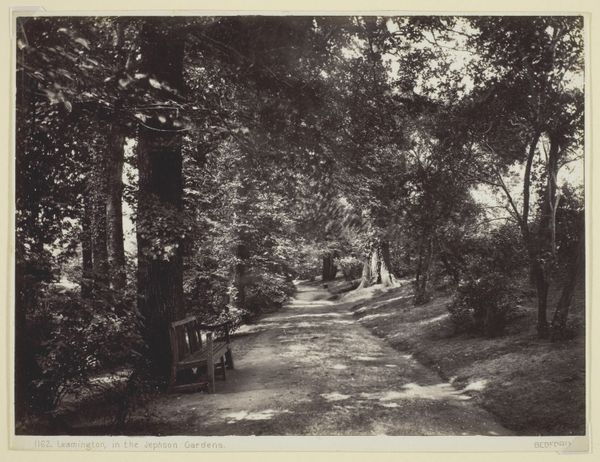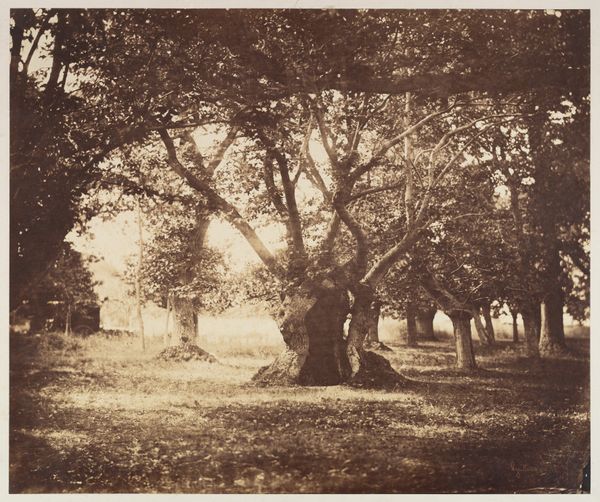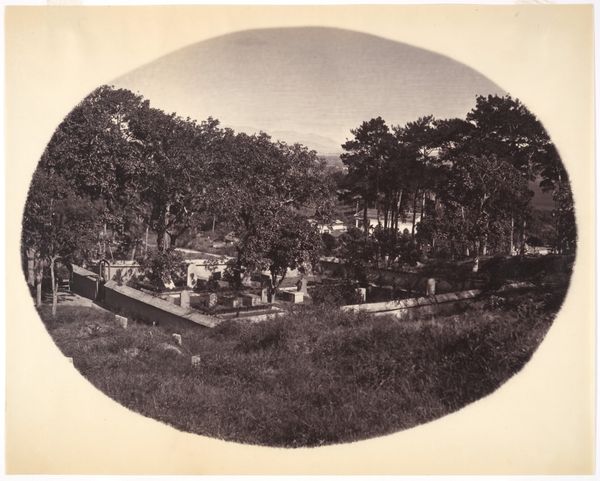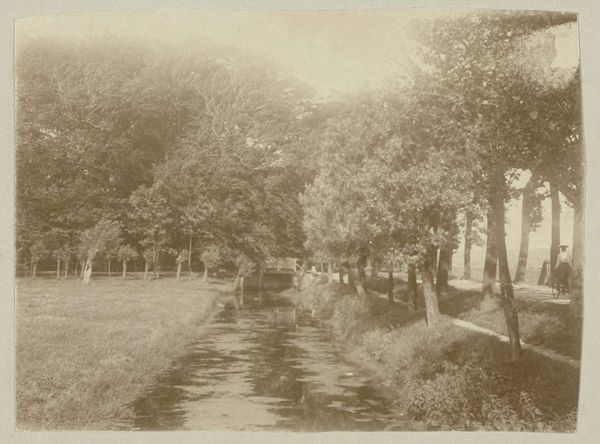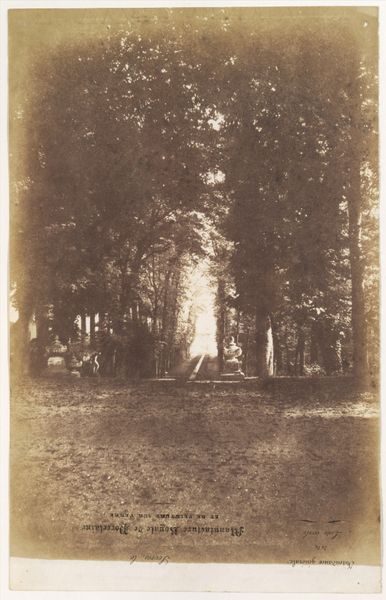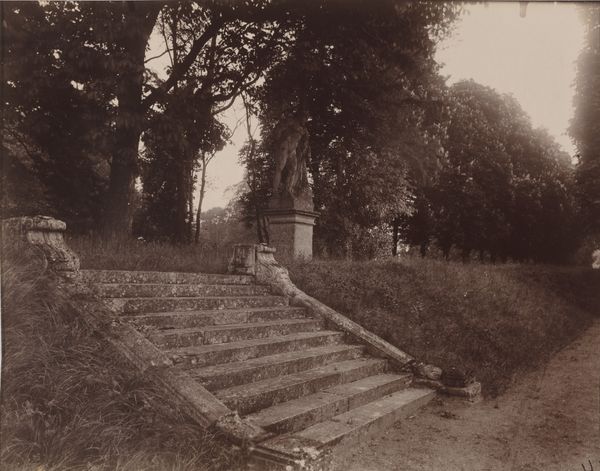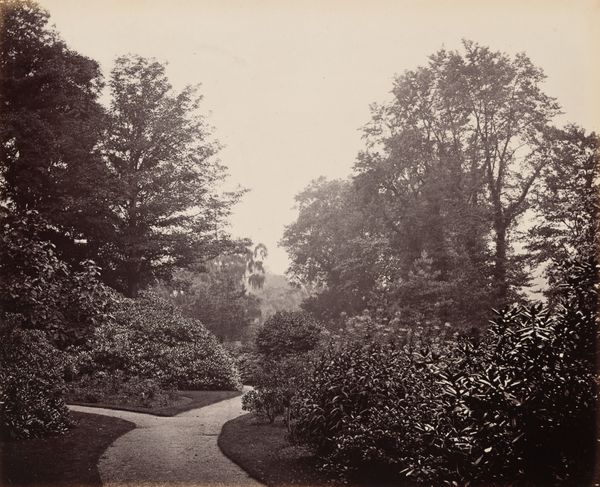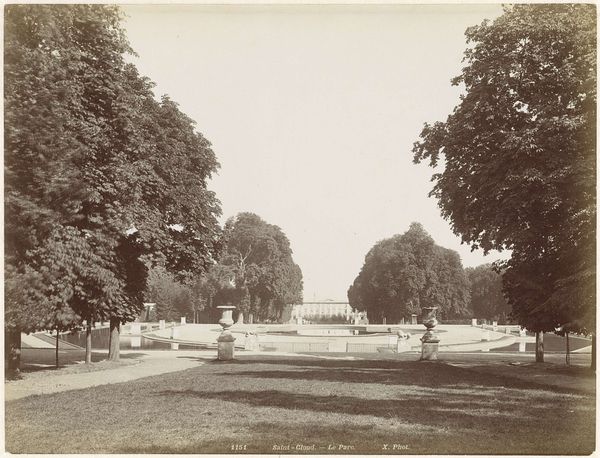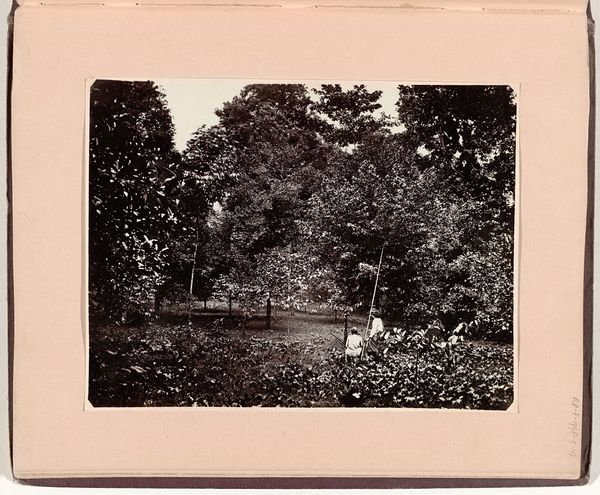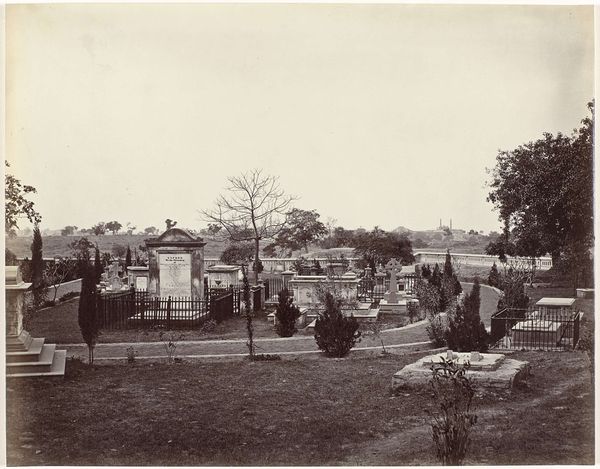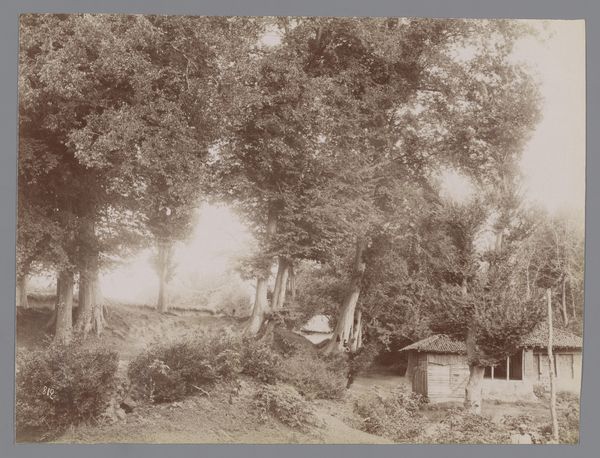
print, photography, site-specific, albumen-print
#
garden
# print
#
landscape
#
photography
#
orientalism
#
site-specific
#
cityscape
#
albumen-print
#
building
Dimensions: Image: 8 1/4 × 10 13/16 in. (21 × 27.5 cm)
Copyright: Public Domain
Editor: This albumen print, "Garden at the English Consulate, Canton," taken by John Thomson in 1869, depicts a tranquil scene, almost dreamlike, with its soft focus and muted tones. How do you interpret this work in its historical context? Curator: This photograph offers more than just a landscape; it's a loaded document. We must ask ourselves, what does it mean to depict a colonial space like this "English garden" in Canton? Thomson’s gaze, through his lens, is intrinsically linked to colonial power dynamics. What appears tranquil to us might reflect a fabricated peace, masking the social and political tensions of British presence in China at that time. Editor: So, the "orientalism" tag suggests there's more to unpack beyond the surface aesthetics? Curator: Precisely. Orientalism, as Edward Said framed it, is a Western construct of the "Orient," often exoticized and romanticized. Consider the positioning: a meticulously maintained English garden, a symbol of British civilization imposed onto Chinese soil. What does it mean to cultivate an English garden so far from England? Editor: It feels like an assertion of control, visually staking a claim. Is there resistance embedded in this photograph that we should be looking for? Curator: Perhaps not resistance in its overt form. Instead, we can analyze Thomson’s choices: the composition, the light, even the seemingly incidental presence of the Chinese figure. What narrative is being constructed, and whose voices are being omitted or suppressed? This photograph is beautiful, yes, but also a complex site of cultural exchange and imperial ambition, captured in a single frame. The role of photography in documenting and disseminating colonial power is central here. Editor: I see it now. The beauty obscures a deeper political narrative. I didn’t consider that such an innocuous scene could reveal so much. Curator: Exactly, and understanding that inherent tension, where beauty meets a complex social and political narrative, is where art history becomes truly compelling.
Comments
No comments
Be the first to comment and join the conversation on the ultimate creative platform.
